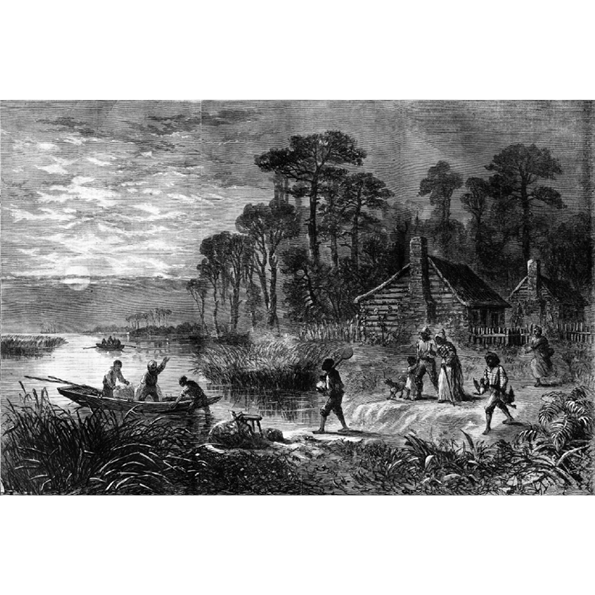
Wetlands refers to a broad category of landscapes and they are created through a variety of mechanisms. Dependings on the rate of water flow, the salinity, and the quantity of decomposing plants they may be swamps, bogs, marshes or fens.
Wetlands are one of the few wildernesses left in many countries. Due to their definition by local ground condition, rather than climate or remoteness, they are often near to human occupation. As a result they have often been used as places to hide, in the USA’s Great Dismal Swamp populations of escaped slaves called Maroons formed communities, independent of the American state that sought their capture. In Iraq, the Mesopotamian Marshes served as a base for an insurrection against the Hussein regime. Today the marshes of Iraq and the swamps of America are still considered places distant from the reach of the central government.
There have been many attempts to bring the wetlands under control, trying to make them habitable or to exploit their resources. Bogs and marshes are defined by their peat soil, a common fuel in contemporary and historically less developed societies. Swamps are often rich sources of timber, George Washington made much of his money through the exploitation of the Great Dismal Swamp for the timber trade. The key components of the wetlands, that is the wet -water-, and the land, are also of value. The water useful for agricultural irrigation in drier climates with estuary marshes, and the land valuable for real estate. Washington’s original business plan before settling on the timber trade was to produce land for sale.
Through draining the wetlands, the state can also attempt to control its residents. Hussein infamously attempted to drain the marsh in response to the insurgency, and the Great Dismal Swamp is much reduced from its original size. Once a wetland is drained, its land can be indistinguishable from other land. The process of converting wetlands into real estate is called poldering. The process is simply one of draining water from the wetlands quicker than it enters. First drainage is improved through the digging of ditches, if this is not enough dijks can be added to prevent water from entering the area, and water can be pumped outside the polder. Much of the Netherlands is made from reclaimed wetlands. However this system must be carefully maintained, its failure will result in catastrophe. Both the great North Sea flood of 1953, and the flooding of New Orleans during Hurricane Katrina in 2005 demonstrate the enormous destruction that will occur when control is lost and the wetland’s drainage fails.
← Back to Lexicon
An admirable view of the desolation which surrounds the[ir] homes ... and the heartiness and energy with which they make their way to freedom upon the slightest opportunity
Sources: Harper’s Weekly, April 9th, 1864
